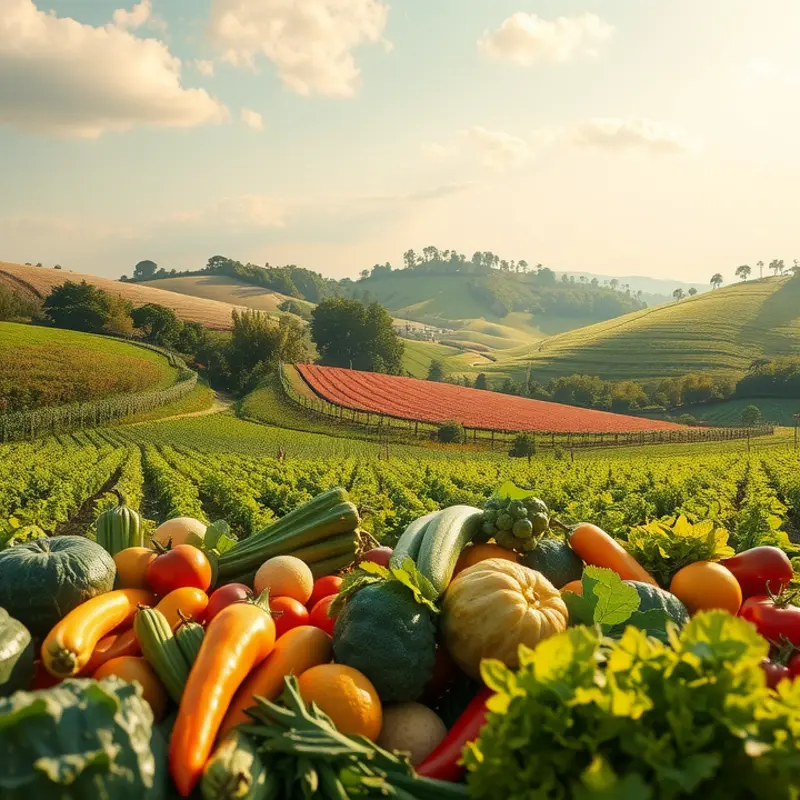Creating a green kitchen is more than just a trend; it’s a commitment to sustainability and healthy choices. Environmentally-conscious individuals recognize the profound impact of their food choices on the planet. From using energy-efficient appliances to sourcing local ingredients, every decision in the kitchen can play a crucial role in preserving our environment. This exploration into green kitchen solutions will empower you to make conscious choices that benefit both your health and the planet.
Energy-Efficient Appliances: Small Changes, Big Impact

Switching to energy-efficient kitchen appliances is a practical starting point for creating a green kitchen. Modern technology allows for reduced energy consumption without compromising on the cooking experience. Many of these appliances are equipped with advanced features that leverage technology to minimize environmental impact.
Understanding Energy Efficiency
Energy efficiency in appliances often translates into using less power to achieve the same level of performance. For instance, an induction cooktop is designed to cook food faster by directly heating the cookware instead of the surrounding air. This minimizes energy waste, particularly compared to traditional gas or electric stoves. Similarly, convection ovens use fans to circulate heat more evenly, cutting down cooking time and, consequently, energy usage.
Choosing the Right Refrigerator
Refrigerators are significant energy consumers in the kitchen, given they run continuously. Opting for models that have high energy ratings can reduce electricity usage substantially. Modern fridges often come with precise temperature controls and smart defrosting, which further enhance efficiency. These technologies ensure your food is preserved optimally, also reducing food wastage—a key component of sustainable living. For more tips on reducing food waste, explore low-waste cooking prep.
Optimal Dishwasher Use
Dishwashers often get a bad rap for water consumption, but energy-efficient models can actually lower both energy and water use compared to handwashing. Look for dishwashers that include energy-saving cycles and air-dry settings. These options use less heat and allow dishes to dry without added energy, benefitting both your utility bill and the environment.
Considerations for Small Appliances
Even small kitchen gadgets, like toasters and blenders, have made strides in energy efficiency. Many brands have started offering devices with energy ratings that match their larger counterparts. A blender with a powerful but efficient motor can not only handle tasks without strain but also reduce prolonged usage.
Smart Technology Integration
The rise of smart technology in kitchen appliances offers additional eco-friendly benefits. Smart systems can be programmed to operate during off-peak hours, when electricity is cheaper and often greener. Remote control and energy usage tracking features found in smart ovens or microwaves help users make informed decisions about their energy consumption.
Incorporating energy-efficient appliances into your kitchen practices not only contributes to lower energy bills but significantly shrinks your carbon footprint. Every small change can have a substantial cumulative impact on the environment. By opting for appliances that focus on both sustainability and top performance, you align your cooking habits with a greener future.
Sourcing Locally: The Power of Community and Fresh Ingredients

Choosing to source ingredients from local farmers and markets builds a bridge between consumers and their communities, fostering a sense of partnership and sustainability. Benefits abound when you opt for fresher, more flavorful produce. Your meals will not only taste better but also contribute to reducing greenhouse gas emissions caused by long-distance transportation.
When sourcing locally, look for markets that prioritize seasonal produce. Seasonal foods are often more abundant, meaning they are less expensive and produced in a more environmentally friendly manner. Plus, they tend to taste better. Research indicates that fruits and vegetables harvested at their peak contain higher levels of vitamins and antioxidants. For example, a summer peach bursts with flavor and nutrients if enjoyed fresh from a local orchard.
Engaging directly with farmers can also educate you about the best seasonal picks. Many markets feature small farmers eager to offer advice on selecting the ripest products. You’ll quickly become adept at spotting the perfect apple or the freshest spinach simply by asking a few questions.
Beyond markets, consider participating in a community-supported agriculture (CSA) program. With a CSA subscription, you regularly receive a box of fresh produce, sometimes even including eggs, milk, and meat. This commitment promises a steady supply of locally produced foods and encourages mindful consumption tailored to what’s been harvested recently.
Growing your own herbs and vegetables is another rewarding strategy that reduces reliance on supermarket produce, and lowers your carbon footprint. Starting with a small kitchen or balcony garden allows you to cultivate herbs such as basil, oregano, and cilantro, which are simple to manage. These plants require minimal space and repay your care with fresh flavors ready to enhance any dish.
If gardening is new to you, begin with easy-to-grow vegetables like radishes or salad greens. Both mature quickly and need less maintenance. As you gain confidence, expand your repertoire with more adventurous options like tomatoes and peppers.
Furthermore, composting is an effective way to enhance your home garden. By using kitchen scraps, you create rich soil that nurtures your plants without relying on synthetic fertilizers, bringing the cycle of sustainability full circle.
As you deepen your journey into sustainable cooking, remember that involving family and friends in the process can make it even more rewarding. Invite them to join you for local market visits or gardening afternoons. Sharing these experiences promotes bonds and spreads the ethos of eco-friendly living across your wider community. To explore more on reducing waste in the kitchen, you might find this guide on low-waste cooking prep insightful.
Integrating local ingredients into your culinary routine not only nurtures your community but also the planet. In each choice lies the power to cultivate a more connected, sustainable future, one meal at a time.
Final words
Embracing green kitchen solutions allows you to contribute positively to the environment while enjoying healthier food choices. From energy-efficient appliances that minimize energy consumption to sourcing fresh ingredients locally, every choice you make creates a ripple effect that extends beyond your kitchen. It’s essential to remember that small, consistent changes lead to significant impacts over time. As you embark on this journey towards a sustainable kitchen, know that each step is vital for nurturing both your well-being and the planet’s health.








